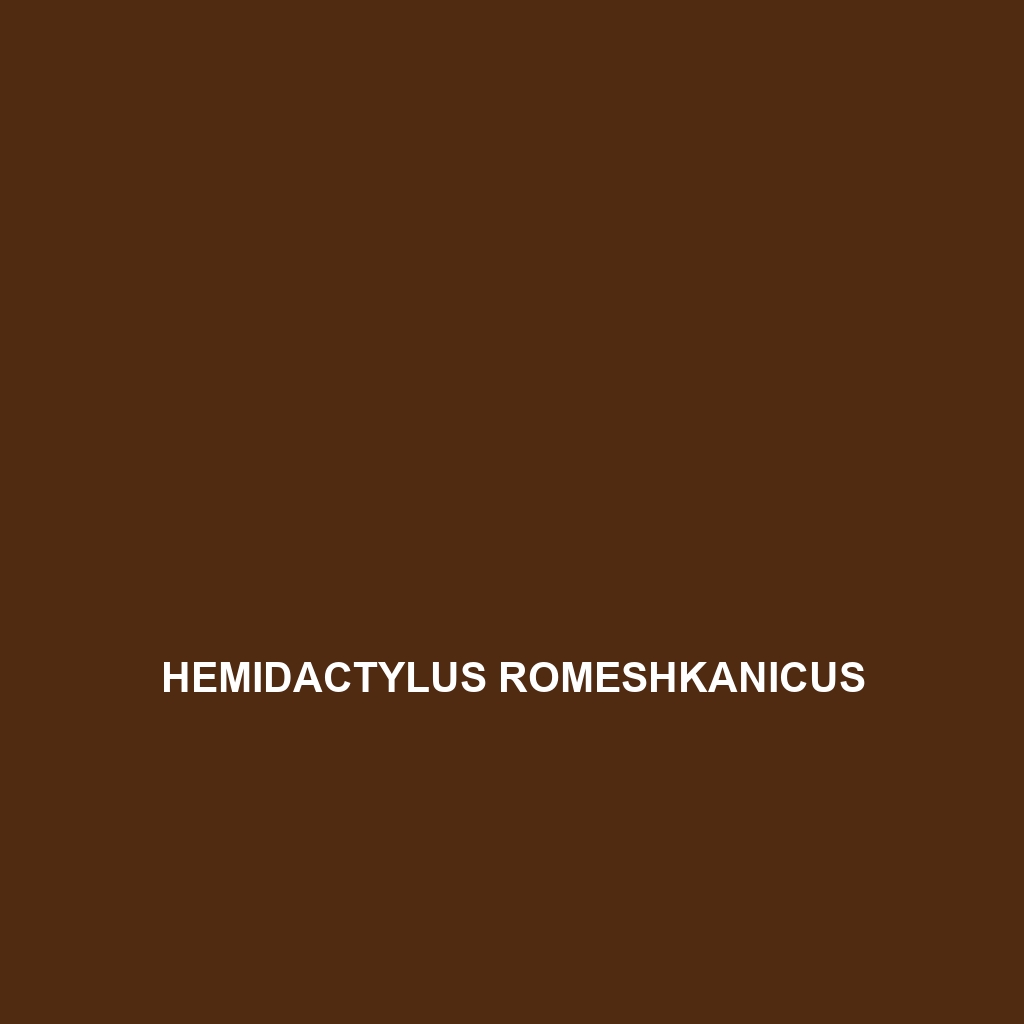Common Name
Hemidactylus robustus
Scientific Name
Hemidactylus robustus
Habitat
Hemidactylus robustus, commonly known as the Robust House Gecko, primarily inhabits tropical and subtropical regions. This species is particularly abundant in areas such as rainforests, savannas, and urban environments. Its geographic distribution spreads across parts of Africa and Asia, thriving in climates that range from humid to moderately dry. These geckos are often found in warm environments with ample access to crevices, walls, and vegetation that provide hideouts from predators and facilitate easy hunting. Their ability to adapt to various environmental conditions enhances their survival rates and broadens their habitat range considerably.
Physical Characteristics
The Robust House Gecko measures approximately 8 to 12 cm in length, with a robust body and large head, making it distinctive among its counterparts. It features a predominantly gray or brown coloration with a pattern of dark spots or stripes that aids in camouflage against bark and rocky surfaces. The toes of Hemidactylus robustus are equipped with lamellae, allowing for effective climbing on smooth surfaces, while its large, retractable eyelids provide protection against debris and aid in moisture retention. These physical adaptations enable the species to thrive in their varied habitats, making them resilient against environmental changes.
Behavior
Hemidactylus robustus exhibits primarily nocturnal behavior, emerging at night to hunt and explore its environment. During the day, they can be found resting in crevices or under loose bark, making them less visible to predators. Their social behaviors include vocalizations, which are used during mating rituals and territorial disputes. Males can often be seen engaging in displays of strength to attract females, showcasing a combination of physical might and agility. These behaviors not only highlight their adaptability but also underline their role in maintaining their population dynamics.
Diet
The diet of Hemidactylus robustus is predominantly insectivorous, consisting mainly of a variety of insects and arthropods. They play an important role in controlling insect populations in their habitats. Their feeding patterns are opportunistic; they will hunt anything that is small enough to capture, including spiders and even small centipedes. As a result, they contribute significantly to the ecological balance in their environments. Given their adaptability, they can also consume small fruits, making them somewhat omnivorous in certain conditions.
Reproduction
The reproductive cycle of Hemidactylus robustus is marked by an interesting mating season that typically occurs during warmer months, paralleling environmental conditions conducive to offspring survival. The females lay clutches of 1-2 eggs, which are deposited in protected areas such as cracks in walls or under rocks. The gestation period lasts around 2-3 weeks, after which the hatchlings emerge fully formed and independent. Parental care is minimal to absent, as the young are equipped with survival skills from birth. This reproductive strategy reflects their successful adaptation to their environment.
Conservation Status
Currently, Hemidactylus robustus is categorized as a species of “Least Concern” by the International Union for Conservation of Nature (IUCN). This status highlights their adaptability and resilience in various environments. However, habitat loss due to urbanization and environmental changes poses potential threats. Conservation efforts mainly focus on habitat preservation and promoting awareness about their ecological importance. Continued monitoring is essential to ensure their populations remain stable amidst changing environmental conditions.
Interesting Facts
One of the fascinating aspects of Hemidactylus robustus is its remarkable ability to regenerate lost toes, a trait that aids in survival by allowing them to escape predators. Additionally, these geckos have a unique ability to vocalize, producing chirps to communicate with one another, particularly during courtship. Their adaptability extends beyond physical survival; they are also known to thrive in human-altered environments, exhibiting behaviors that suggest a level of social intelligence uncommon in many reptiles.
Role in Ecosystem
Hemidactylus robustus plays a vital role in the ecosystems they inhabit through their interactions with both prey and predator species. As insectivores, they help maintain insect populations, thereby fostering a healthy environment. Additionally, they serve as prey for larger predators, including birds and mammals, contributing to the food web. The presence of these geckos in an ecosystem indicates a balanced habitat, making them crucial for ecological stability. Their role highlights the interconnectedness of species within their environment and the importance of preserving their habitats to maintain biodiversity.
